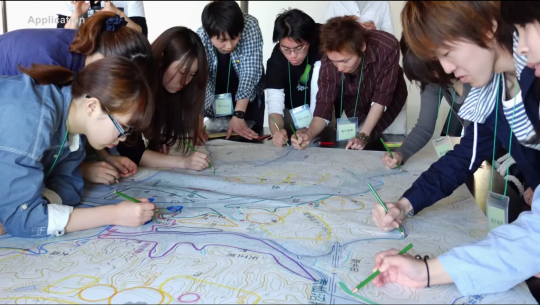
The first people to arrive at the scene of any natural disaster are almost always members of the affected community. Yet in most cases, disaster response and recovery mechanisms are built from the top down, with tools and processes built by and for government and other institutional actors.
Code for Resilience — a global initiative managed by the Global Facility for Disaster Reduction and Recovery (GFDRR) — focuses on strengthening community resilience to natural disasters and is helping bridge this divide by connecting disaster risk management experts with local technology communities.
To share their experiences, a number of Code for Resilience participants from across Asia will gather at the Asia Resilience Forum 2015, organized as part of the World Conference on Disaster Reduction and Recovery’s Public Forum March 14-15, 2015, in Sendai, Japan. They will discuss how they are engaging with disaster risk management authorities and developing community-led technology solutions to address local challenges in countries including Bangladesh, India, Indonesia, Japan, Pakistan, and Vietnam.
Advances in technology — including rising communications access, falling hardware costs, and a growing movement toward open data, open source, and open innovation — have created a new opportunity to engage local communities in creating a feedback loop that informs data about disaster preparedness, response and recovery.
For communities, this means greater access to information to make informed decisions that strengthen community resilience. For governments and other institutional responders, this means an increased awareness of disaster preparedness and response needs and new opportunities to decentralize time- and labor-intensive information collection, management and analysis.
Community-based resilience has been an important topic for GFDRR since its inception in 2007. In the recent years, advances in technology have made it simpler to generate scientifically rigorous data on natural hazards, including exposure and vulnerability information, even at the local community level.
In Japan for instance, every household has received a hazard map developed by the local authority of their local area. One can imagine a digital corollary created for at-risk communities in low- and middle-income countries that uses text and voice messaging through mobile technology to complement existing analog strategies.
Code for Resilience created a sandbox for these kinds of innovations in 2014 through 11 events held in eight countries, organized in partnership with national and local disaster risk management agencies, national open innovation movements, private sector and university partners. These events engaged more than 1,000 technologists to address more than 70 disaster risk management problem statements. These included:
- How can we quickly identify the location of religious pilgrims who require assistance after sudden flooding events that happen in India’s mountainous Himalaya region?
- If a tsunami hits a coastline, which route can the local residents take to get to the nearest tsunami shelter safely? Are there enough shelters on the coastline to save the lives of the people likely to be in the area? Are shelters built to the standards required to withstand tsunami events?
- In the absence of hydro-meteorological instruments that can measure and report the water and rainfall level of rivers, what other means do the communities have to assess whether a flood is likely?
This includes introducing new innovations. At the Asia Resilience Forum on March 14-15, and in Tokyo on March 16, Code for Resilience will partner in a technical workshop on the use of geospatial data from the Hodoyoshi microsatellite, which was recently developed and launched by the Engineering Department of the University of Tokyo. This will open up opportunities for communities to incorporate this new dataset into their solutions, helping them to become more resilient and make better decisions in preparing for disasters.
For more information, read our feature story on Building a New Framework for Disaster Risk Reduction, which includes a range of infographics on Investing in Reslience.


Join the Conversation